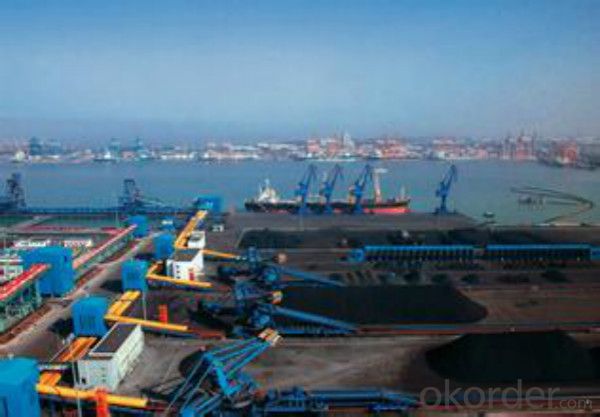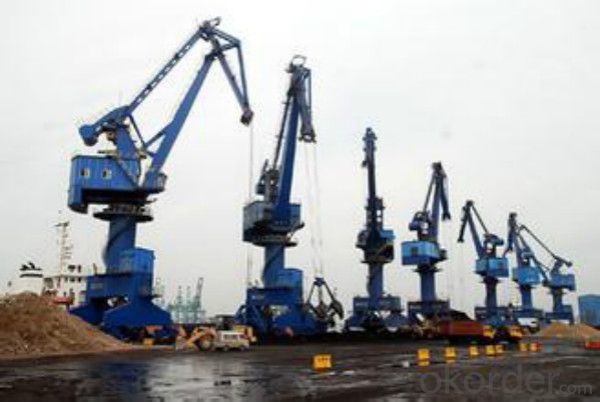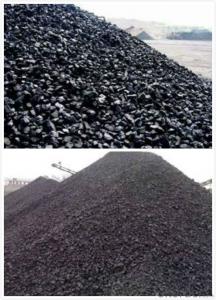Foundry Coke Manufactured in China for Furnace Charge
- Loading Port:
- Tianjin
- Payment Terms:
- TT OR LC
- Min Order Qty:
- 100 m.t
- Supply Capability:
- 10000 m.t/month
OKorder Service Pledge
OKorder Financial Service
You Might Also Like
Product Description
Foundry Coke is a kind of main raw materials used for steel makers, we have own coke plants at Shanxi province with output 2 million MT.
The coke handled by our couporation is made from superior coking coal of Shanxi province. Provided with the dvantages of low ash, low sulphur and high carbon.Our coke is well sold in European,American,Japanese and South-east Asian markets. Our owned Coke plant are located in Shanxi Province and supplying of you many kinds of coke.
Features
This is a special coke that is used in furnaces to produce cast and ductile iron products. It is a source of heat and also helps maintain the required carbon content of the metal product. Foundry coke production requires lower temperatures and longer times than blast furnace coke.
Specification
Fixed Carbon | Sulphur Content | Moisture | V.Matter | Ash |
86%min | 0.7%max | 5%max | 1.2%max | 12%max |
88%min | 0.65%max | 5%max | 1.5%max | 10%max |
85%min | 0.8%max | 15%max | 2%max | 13.5%max |
Size: 60-90mm,90-120mm,120-150mm,150-180mm and so on.
Pictures


FAQ:
1 How long can we deliver the cargo?
Within 30 days after receiving the LC draft or down payment
2 Time for after-sales?
1 year.
- Q:What is the role of carbon in the formation of coal, oil, and natural gas?
- The formation of coal, oil, and natural gas relies heavily on carbon. Carbon is a crucial component of these fossil fuels, along with varying amounts of hydrogen, sulfur, nitrogen, and other elements. To begin the formation process, organic matter, such as dead plants and marine organisms, accumulates in oxygen-limited environments. Over a span of millions of years, the organic matter undergoes intense heat and pressure, resulting in a process called carbonization. During carbonization, the carbon within the organic matter undergoes chemical transformations, converting it into solid, liquid, or gaseous hydrocarbon compounds. The specific conditions under which carbonization takes place determine the specific type of fossil fuel that will be produced. In the case of coal, the organic matter primarily consists of land-based plant material. Through high pressure and temperature, carbonization converts this plant material into solid coal. The duration and intensity of the carbonization process determine the carbon content of the resulting coal. Different types of coal, such as lignite, bituminous, and anthracite, exhibit varying carbon content and energy density. Conversely, oil is formed from marine organisms like plankton and algae. As these organisms die, they descend to the ocean or lake floor and gradually become buried beneath layers of sediment. Over time, the heat and pressure cause carbonization, transforming the organic matter into a liquid hydrocarbon mixture known as crude oil. This crude oil can subsequently undergo further processing to yield various petroleum products. Natural gas, on the other hand, consists primarily of methane (CH4) and forms under similar conditions as oil. However, the carbonization process occurs at higher temperatures and pressures, leading the organic matter to decompose into gaseous hydrocarbon compounds. Natural gas can be found alongside oil deposits or trapped within underground rock formations, such as shale or sandstone. In summary, carbon serves as the essential foundation for the formation of coal, oil, and natural gas. Its presence within organic matter, combined with optimal conditions of heat, pressure, and time, culminates in the creation of these valuable energy resources that significantly contribute to powering our modern world.
- Q:How does carbon affect the formation of tsunamis?
- Carbon does not directly affect the formation of tsunamis. Tsunamis are typically caused by underwater earthquakes, volcanic eruptions, or landslides, which are not influenced by carbon. However, carbon emissions and climate change can indirectly impact the frequency and intensity of natural disasters, including some potential triggers for tsunamis, such as volcanic activity or landslides near coastlines.
- Q:How does carbon impact the structure and function of ecosystems?
- Carbon is a fundamental element that plays a crucial role in shaping the structure and function of ecosystems. It is a building block of life, present in all living organisms, and is constantly cycling between the atmosphere, living organisms, and the Earth's surface. Carbon impacts ecosystems in various ways, both directly and indirectly. Firstly, carbon is a key component of organic matter, such as plants, animals, and decomposing organic materials. It provides the energy and nutrients necessary for the growth and development of organisms. Through photosynthesis, plants absorb carbon dioxide from the atmosphere and convert it into organic compounds, primarily carbohydrates, that serve as a source of energy and building material for other organisms. This process forms the basis of the food chain, as herbivores consume plants and carnivores consume herbivores. Thus, carbon is essential for the structure and functioning of ecosystems by sustaining the productivity and biodiversity of organisms within them. Moreover, carbon influences the physical structure of ecosystems. In terrestrial ecosystems, carbon is stored in vegetation and soils, forming carbon sinks. Forests, for example, store vast amounts of carbon in their biomass and soils, playing a crucial role in mitigating climate change by absorbing and sequestering carbon dioxide. The loss of these ecosystems, through deforestation or degradation, can release large amounts of carbon back into the atmosphere, contributing to the greenhouse effect and climate change. In marine ecosystems, carbon is stored in the form of dissolved inorganic carbon, which can impact ocean acidity. The increasing concentration of carbon dioxide in the atmosphere leads to ocean acidification, affecting the growth and survival of marine organisms, particularly those with calcium carbonate shells or skeletons, such as corals and mollusks. Furthermore, carbon influences the functioning of ecosystems through its role in nutrient cycling. Decomposition, the process by which organic matter is broken down and recycled, is largely driven by microorganisms that respire carbon dioxide. Decomposition releases nutrients such as nitrogen, phosphorus, and sulfur back into the soil, making them available for uptake by plants. This nutrient cycling is essential for maintaining the productivity and nutrient balance within ecosystems. Changes in carbon availability can affect the rates of decomposition and nutrient cycling, which in turn can impact the structure and functioning of ecosystems. Overall, carbon is a fundamental element that significantly impacts the structure and function of ecosystems. Its role in energy transfer, organic matter formation, nutrient cycling, and climate regulation makes it essential for the sustainability and functioning of all living organisms within an ecosystem. Understanding and managing carbon dynamics is crucial for maintaining the health and resilience of ecosystems in the face of environmental changes.
- Q:What are the different types of carbon fibers?
- There are several different types of carbon fibers, each with its own unique characteristics and properties. Some of the most common types include: 1. PAN-based carbon fibers: These are the most commonly used carbon fibers and are made from polyacrylonitrile (PAN) precursor materials. They offer a good balance between strength, stiffness, and cost-effectiveness. 2. Pitch-based carbon fibers: These fibers are made from coal tar pitch or petroleum pitch precursor materials. They typically have a higher density and higher thermal conductivity compared to PAN-based fibers, making them suitable for applications requiring high thermal stability. 3. Rayon-based carbon fibers: These fibers are produced from regenerated cellulose, commonly known as rayon. They have a lower modulus and strength compared to PAN-based fibers but offer excellent electrical conductivity and are often used in applications such as conductive textiles and electrical components. 4. Mesophase pitch-based carbon fibers: These fibers are made from a liquid crystalline precursor material called mesophase pitch. They have a high modulus and excellent thermal conductivity, making them ideal for applications requiring high strength and heat resistance, such as aerospace and automotive industries. 5. Vapor-grown carbon fibers (VGCFs): These fibers are produced by the chemical vapor deposition (CVD) method. They have a unique tubular structure and high aspect ratio, offering exceptional mechanical and electrical properties. VGCFs are often used in advanced composite materials and nanotechnology applications. It is important to note that the choice of carbon fiber type depends on the specific requirements of the application, such as mechanical strength, thermal stability, electrical conductivity, or cost-effectiveness.
- Q:What is a carbon free martensite?
- Common martensite in iron based alloys, the essence of carbon and alloy elements (or) in alpha iron in the supersaturated solid solution. The iron carbon alloy is two yuan, carbon in alpha iron in the supersaturated solid solution.
- Q:What are the impacts of carbon emissions on human health in developing countries?
- The impacts of carbon emissions on human health in developing countries can be significant. Exposure to high levels of carbon emissions, particularly from sources such as vehicle exhaust, industrial pollution, and inefficient cooking fuels, can lead to various health problems. These include respiratory issues like asthma, bronchitis, and lung cancer, as well as cardiovascular diseases, allergies, and compromised immune systems. Additionally, carbon emissions contribute to the formation of smog and air pollution, which further worsen these health conditions. Developing countries often lack the resources and infrastructure to effectively mitigate these emissions, making their populations more vulnerable to the adverse health effects of carbon emissions.
- Q:What does carbon nanotubes (5,5) in (5,5) mean?
- 3. get (5,5) after the initial point (0,0) to draw a line, this line is the circumference of the carbon nanotubes.
- Q:How does carbon affect the fertility of soil?
- Carbon is essential for maintaining and enhancing soil fertility. It provides a food source for soil microorganisms, promotes nutrient availability, and improves soil structure, water holding capacity, and overall soil health. Additionally, carbon helps increase the capacity of soil to retain and release nutrients, creating a favorable environment for plant growth and enhancing soil fertility.
- Q:Glucose contains resveratrol (C14H12O3) to determine the mass ratio of resveratrol and carbon dioxide of the same quality as carbon dioxide
- They are x and y, containing carbon equal, according to the mass of an element = the mass of a compound * the elementMass fractionFor C14H12O3, the carbon mass fraction is C%=12*14/ (12*14+12+16*3) *100%=73.68%For CO2, the mass fraction of carbon is 12/ (12+16*2) =27.27%There is x *73.68%=y*27.27%So there's X: y =57:154
- Q:Search for a summary of the importance of carbon in life. If you write well, you can add points,
- People familiar with the organic carbon material more use in daily life and industrial and agricultural production, mainly on gasoline, diesel, kerosene, liquefied gas, natural gas, chemical solvents and fire extinguishing agents such as carbon tetrachloride, carbohydrates (rice, wheat, corn, sorghum, sweet potatoes, potatoes, sugar, fruit, vegetables, paper etc.) chemical fiber, cotton, wood, etc. not all examples.In short, without carbon and its compounds on earth, humans and all living things can not survive and develop, or the earth is a lifeless sphere with only rocks and soil
1. Manufacturer Overview |
|
|---|---|
| Location | |
| Year Established | |
| Annual Output Value | |
| Main Markets | |
| Company Certifications | |
2. Manufacturer Certificates |
|
|---|---|
| a) Certification Name | |
| Range | |
| Reference | |
| Validity Period | |
3. Manufacturer Capability |
|
|---|---|
| a)Trade Capacity | |
| Nearest Port | |
| Export Percentage | |
| No.of Employees in Trade Department | |
| Language Spoken: | |
| b)Factory Information | |
| Factory Size: | |
| No. of Production Lines | |
| Contract Manufacturing | |
| Product Price Range | |
Send your message to us
Foundry Coke Manufactured in China for Furnace Charge
- Loading Port:
- Tianjin
- Payment Terms:
- TT OR LC
- Min Order Qty:
- 100 m.t
- Supply Capability:
- 10000 m.t/month
OKorder Service Pledge
OKorder Financial Service
Similar products
New products
Hot products





























